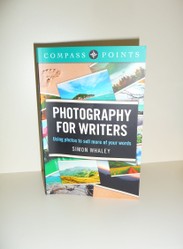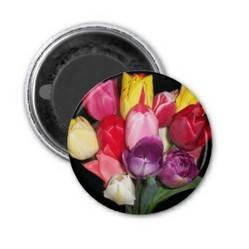Photography for Writers is written by Simon Whaley and the subtitle is Using photos to sell more of your words. This book I would consider to be the definitive guide to taking the right image to illustrate your words, a book in which the basics of digital photography are explained along with the different markets available to writers with a camera. It is written with humour and should be in the library of all writers, ready to be referred to when necessary.

Photography for Writers
by Maritravel
Hot on the heels of my review of a book for Travel Writers, comes one on Photography for Writers, one that is as important to bloggers as to professional travel writers.
With no researchers or sub-editors, the editor needs a complete package
In today’s editorial offices, the chance of a sub being on the pay-roll, or a researcher to dig out the necessary photograph to illustrate your article, is likely to be Nil. Therefore, to be sure of a sale, or even to be sure of the editor reading your piece, you should be able to offer photographs as well. Few editors have the time to source suitable photos from an agency and have little money to spend on hiring a photographer to take suitable images. It stands to reason therefore, that if you offer a package of words and pictures then you stand a better chance of a) of having your article read and b) of selling the piece.
Today's Photography
Digital methods of creating images have made photography accessible to all. From the high-tech DSLRs to the budget cameras, and from the quirky underwater cameras to ‘phone cameras, we all have easy access to this form of image making, and a quick glance at any of today’s magazines and newspapers shows how essential the image is to help sell the content.
Why Photographs?
To encourage you to delve into the world of photography to illustrate your words, Simon suggests looking at the tabloid-style magazines where even the readers’ letters pages are filled with images, each letter being illustrated.
Most magazines pay extra for photographs when used with articles but they do not pay extra for those used with letters or fillers. As a travel writer I find that nowadays my photographs often pay more than the text I submit. That is because most editors like a spread of good shots to break up the words, i.e. in a 1500 word article for some glossy magazines you could expect to sell between 8 and 14 photographs. Depending on the magazine, the price will range from £40-£80 for each image and the top magazines pay more than that. If you can get a cover picture, then you could be looking at hundreds of pounds.
In Photography for Writers Simon also points out that pictures are an excellent aide memoire and a useful adjunct to your notebook. The cost of digital photography is neglible today when compared to former times when rolls of film had to be carried and then developed when you got home, always wondering if they would turn out right.
What Camera to Buy & How to Analyse Images
There is a chapter on the different types of camera available to the photographer with an easy to understand explanation of their different functions, how to capture a photograph, how cameas work and the technical data that is relevant but that you can skip if you like.
Every question you ever wanted to ask is answered in headings like Understanding Programme Modes, Planning your Image, Photo Orientation, and Digital File types.
Questions you may not have known to ask are answered in the chapter Photography Legalities.
How to set up a Digital Library and Basic Image Processing are also covered in easy to understand language, the later section dealing with straightening and cropping, cloning and image manipulation.
Possibly the most useful chapter (after the ‘how to’ chapters) is the one on Magazines and how to analyse the images they use, something that is important if you are going to impress an editor. This same chapter covers how to access and use someone else’s images, always a good thing to know if your own photographs do not come up to scratch but you are trying to sell an article. It pays dividiends if you can tell the editor that you can access such and such photographs from a source and that you can let the magazine have them at the same time as you send the text.
Summary
It is impossible to cover in this blog all the points and chapter headings in this very useful book. It is small enough to fit into your pocket for quick reference with a few blank pages at the end for your notes. There is nothing else like this on the market and if you are keen to sell photographs with your words, then read this book and refer to it often.
It is available at all good bookshops and from Amazon.
Photography for Writers by Simon Whaley
Published by Compass Books (Winchester UK and Washington USA) 2014
You might also like
Flower Magnets on ZazzleFlower magnets, Zazzle, sandyspider gifts, summer flowers, photos of flowers,...
Macro PhotographyEach photographer will have one particular form of photography they enjoy doi...







 The Alternative Picture Galleryon 04/20/2016
The Alternative Picture Galleryon 04/20/2016
 ROME - Where the Past Comes to Lifeon 03/26/2016
ROME - Where the Past Comes to Lifeon 03/26/2016
 Only in London - New Unique Guideon 01/25/2016
Only in London - New Unique Guideon 01/25/2016
 Manna, from Sicily, not from Heavenon 01/08/2016
Manna, from Sicily, not from Heavenon 01/08/2016



Comments